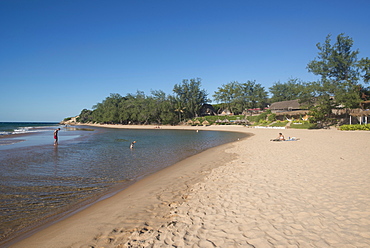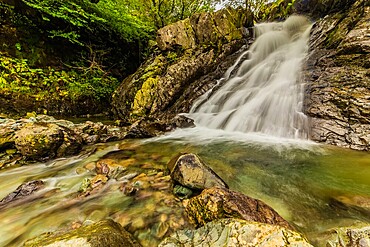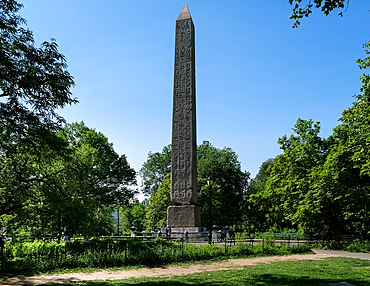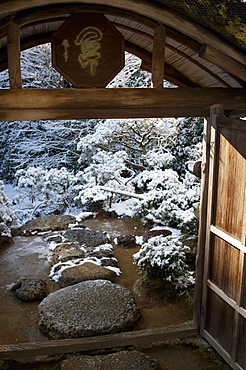Recent searches
Loading...
1382-35 - Saint Anne's Church and the Church of St. Francis and St. Bernard, Vilnius, Lithuania, Europe
1383-35 - People arriving for the Ukusefya Pa Ng'wena Ceremony
1384-35 - Faces of historic figures Independence monument in Barrio San Roman, Campeche city, Campeche State, Mexico
252-11212 - Strokkur (the Churn) which spouts up to 35 meters erupting every 10 minutes, Geysir, Golden Circle, Iceland, Polar Regions
767-35 - J.C. Nichols Fountain, Country Club Plaza, Kansas City, Missouri, United States of America, North America
764-35 - Dawn ridges, near Namib Naukluft Park, Namibia, Africa
485-35 - Henley on Thames, Bridge and River Boat, Oxfordshire, England
734-35 - Exterior of a small church in arid landscape near Al Tatio geysers, Atacama desert, Chile, South America
744-35 - One of the four small gold mummiform coffins placed in the canopic urns, from the tomb of the pharaoh Tutankhamun, discovered in the Valley of the Kings, Thebes, Egypt, North Africa, Africa
832-370958 - Woman, 35, in a bathtub with chocolate, Thalasso therapy in a spa resort
832-370960 - Couple in a sauna, woman, 35 years, and man, 54 years
743-35 - Orang utan mother and baby, Pongo pygamaeus, in captivity, Singapore Zoo, Singapore, Southeast Asia, Asia
832-370954 - Woman, 35, relaxing in a bathtub with rose petals, Thalasso therapy in a spa resort
832-370953 - Woman, 35, relaxing in a bathtub with rose petals, Thalasso therapy in a spa resort
832-370956 - Woman, 35, in a bathtub with chocolate, Thalasso therapy in a spa resort
832-370952 - Woman, 35, relaxing in a bathtub with rose petals, Thalasso therapy in a spa resort
832-370961 - Couple in a sauna, woman, 35 years, and man, 54 years
832-370948 - Woman, 35, wellness, relaxing with petals and tea lights
755-35 - Mahout and elephant in early morning mist, Island Jungle Resort Hotel, Royal Chitwan National Park, on the Gangetic plains of the Terai, Nepal, Asia
801-1268 - Structure 21, Stela 35, stone carving of Lady Ik Skull, Mayan Archaeological Site, Yaxchilan, Chiapas, Mexico, North America
769-35 - Thermae Bath Spa, Bath, Avon, England, United Kingdom, Europe
799-35 - Pastel sunset off Combesgate Beach, Devon, England, United Kingdom, Europe
813-35 - Stalls in Kauppatori Square (Market Square) and Orthodox church behind, Turku, Western Finland, Finland, Scandinavia, Europe
819-35 - Historical water pageant during the Regata Storica 2009, Venice, Veneto, Italy, Europe
831-35 - St. Frideswide stained glass window by Edward Burne-Jones dating from 1858, Christ Church College Cathedral, Oxford, England, United Kingdom, Europe
1319-35 - Fushimi Inari Taisha shrine in Kyoto, Japan, Asia
817-313558 - Scientist taking samples and measuring the ash fall from Grimsvotn volcanic eruption, Iceland Team on ash covered glacier approx 35 kilometers from the crater The eruption began on May 21, 2011 spewing tons of ash
848-35 - San Antonio Aguas Calientes, Guatemala, Central America
1004-35 - Snakelocks Anemone, (Anemonia viridis) Jersey, British Isles
1191-35 - Coricancha Temple, important temple of the Inca Empire, Cusco City, Cuzco, UNESCO World Heritage Site, Peru, South America
857-33969 - Men on bikes ride past an ancient brick minaret toward the old walls and citadel of the town of Ghazni, Afghanistan, October 1, 2002. Made of brick decorated with Kufic and Naksh Script and floral motifs, the minaret dates back to the early 12th century and was built by Sultan Masud III of the Ghaznavid Dynasty, who ruled over an empire encompassing much of Afghanistan, Northern India, Persia and Central Asia. The minaret was once three times as tall as its current 70 feet, and is thought to have been part of a large mosque complex. Now an important truck stop on the road to Kandahar, Ghazni, located on the Lora River at the elevation of 2,225 meters, is the capital of Ghazni province with a population of 35,900, and is a market for sheep, wool, camel hair cloth, corn, and fruit.
975-136 - from 35,000 feet in the air, the Sahara Desert looks more like the surface of Mars. Sahara Desert, Libya, North Africa
1065-35 - Gadsden, Alabama, Lightnijng; Lightning Storm; Storm; Gadsden; Alabama
1109-35 - Woman meditating at Mawun Beach, South Lombok, Indonesia, Southeast Asia, Asia
1286-35 - The Clyde Arc, River Clyde, Glasgow, Scotland, United Kingdom, Europe
1284-35 - Sunset view of the Royal Palace, City Moat and City Wall in Mandalay, Myanmar (Burma), Asia
1111-35 - Portrait of Samburu tribe members dancing the traditional wedding dance at dusk, Kenya, East Africa, Africa
1306-35 - Girls dressed in traditional dancing costume, Bangkok, Thailand, Southeast Asia, Asia
1304-35 - 900 year old dead trees shot at Deadvlei at sunrise among the big Daddy Dune, Sossusvlei, Namibia, Africa
832-401761 - Young proud pilot stands in front of his F 35 fighter plane, AI generated
748-35 - African Elephant, (Loxodonta africana), Chobe River, Chobe N.P., Botswana
757-35 - Wooden jetty and volcanoes in the distance, Lago Atitlan (Lake Atitlan), Guatemala, Central America
857-33971 - Afghan men pause on the road with an ancient brick minaret and many shrines in the background, outside of Ghazni, Afghanistan, October 1, 2002. Made of brick decorated with Kufic and Naksh Script and floral motifs, the minaret dates back to the early 12th century and was built by Sultan Masud III of the Ghaznavid Dynasty, who ruled over an empire encompassing much of Afghanistan, Northern India, Persia and Central Asia. The minaret was once three times as tall as its current 70 feet, and is thought to have been part of a large mosque complex. Now an important truck stop on the road to Kandahar, Ghazni, located on the Lora River at the elevation of 2,225 meters, is the capital of Ghazni province with a population of 35,900, and is a market for sheep, wool, camel hair cloth, corn, and fruit, and continues to be a haven for Taliban insurgents.
1320-35 - Classic car scene on the streets of Havana, Cuba, West Indies, Caribbean, Central America
812-35 - Rorbuer (fishermans huts) on jetty, Lofoten Islands, Norway, Scandinavia, Europe
1231-35 - Arles Amphitheatre (les Arènes d'Arles), Built by the Romans in 90 AD.
920-35 - Large school of black triggerfish (Melichthys niger), Hanauma Bay, Oahu, Hawaii, United States of America, Pacific
1314-35 - Aerial view of the Pearl-Qatar, the luxurious modern artificial island in the Persian Gulf, Venice at Qanat Quartier, Marsa Malaz Kempinski hotel and towers of Porto Arabia, Doha, Qatar, Middle East.
1378-35 - Glowing Ortakoy Mosque in the rays of the sun in cloudy weather, Istanbul. Turkey
1376-35 - View towards Church Beck which runs down the Coppermines Valley into Coniston Water, Lake District National Park, UNESCO World Heritage Site, Cumbria, England, United Kingdom, Europe
832-370955 - Woman, 35, in a bathtub with chocolate, Thalasso therapy in a spa resort
823-35 - Aerial image of Knowlton Henge, a Neolithic henge monument, and Knowlton Church, a ruined Norman church, Dorset, England, United Kingdom, Europe
1012-35 - Big Eye Cotton Fish & diver. Mabul Island, Malaysia
1251-35 - Boat in front of Saint-Cado isle, Quiberon, Morbihan, Brittany, France, Europe
1270-35 - A man picks some red coffee beans from a coffee plant, Ethiopia, Africa
832-401764 - Young proud pilot stands in front of his F 35 fighter plane, AI generated
698-35 - Red tussock grass, Mossburn, South Island, New Zealand, Pacific
1067-35 - Whitemargin stargazer (Uranoscopus sulphureus) hiding in sand waiting for prey to pass by. Komodo, Indonesia, Pacific Ocean.
1298-35 - View along the Great Ridge path looking towards Lose Hill, Peak District National Park, Derbyshire, England, United Kingdom, Europe
252-11213 - Strokkur (the Churn) which spouts up to 35 meters erupting every 10 minutes, Geysir, Golden Circle, Iceland, Polar Regions
1372-35 - Green lighthouse being constructed in the sea of Hakodate, Hokkaido, northern Japan, Asia
1219-35 - An autumn storm rolls in across Lake Brienz from the mountains of the Bernese Oberland, Canton of Berne, Switzerland, Europe
1131-35 - Gelada baboons (Theropithecus Gelada) grooming each other, Simien Mountains National Park, Amhara region, North Ethiopia, Africa
849-35 - Bluebells, Delcombe Wood, Dorset, England, United Kingdom, Europe
1194-234 - Drugs, bulgaria teenagers at drug awareness program in high school no. 35, sofia
1373-35 - View of Cleopatra's Needle, a red granite obelisk, from the Temple of Ra in Ancient Egypt, Central Park, New York City, United States of America, North America
1228-35 - Icelandic sheep, Kirkjufell, Iceland, Polar Regions
1283-35 - Clock tower of the City Loggia of Trogir at dawn, Croatia, Europe
1373-62 - Architectural detail of the Helmsley Building, built in 1929 as the New York Central Building and designed by Warren and Wetmore in the Beaux-Arts style, a 35-story skyscraper just north of Grand Central Terminal, in Midtown Manhattan, New York City, United States of America, North America
832-370957 - Woman, 35, in a bathtub with chocolate, Thalasso therapy in a spa resort
845-35 - Christmas Market on Parliament Street, York, Yorkshire, England, United Kingdom, Europe
847-35 - Looking down in the early evening onto the more open stretches of the Vikos Gorge, near Vitsa and the Misius Bridge in spring, Epirus, Greece, Europe
832-383769 - 30-35 year old woman scans her head with a 3D scanner
1199-35 - Oxford from South Park, Oxford, Oxfordshire, England, United Kingdom, Europe
979-35 - (Multiple values)
(Restricted Resolution - pls contact us)
979-7139 - Chinstrap penguin (Pygoscelis antarctica) chick head detail at colony on Useful Island near the Antarctic Peninsula. There are an estimated 2 million breeding pairs of chinstrap penguins in the Antarctic peninsula region alone, perhaps as many as 7.5 million breeding pairs in all of Antarctica. Their name derives from the narrow black band under their heads which makes it appear as if they are wearing black helmets, making them one of the most easily identified types of penguin. Other names for them are "Ringed Penguins", "Bearded Penguins", and "Stonecracker Penguins" due to their harsh call. They grow to 68 cm (27 in). The average adult weight of a Chinstrap Penguin is 4.5 kg (10 lbs). Weight can range from 3 to 6 kg (6.6-13.2 lbs), with males being slightly larger and weight varying based on where the penguin is in the breeding cycle. Their diet consists of krill, shrimp, and fish. On land they build circular nests from stones, and lay two eggs, which are incubated by both the male and the female for shifts of five to ten days. They can also breed on icebergs, though they prefer non-icy conditions. The chicks hatch after about 35 days, and have fluffy gray backs and white fronts. The chicks stay in the nest for 20?30 days before they go to join a creche. At around 50?60 days old, they moult, gaining their adult plumage and go to sea. The Chinstrap Penguin was first described by German naturalist Forster in 1781. Its specific epithet was often seen as antarctica, however a 2002 review determined the genus Pygoscelis was masculine, and hence the correct binomial name is Pygoscelis antarcticus.
1167-35 - Resident in traditional dress at her house, Langa Township, Cape Town, South Africa, Africa
1369-35 - Aerial abstract view of Icelandic river, Iceland, Polar Regions
958-35 - Close up deatail of glowing red and orange Christmas Tree Worm showing spiral shape. Cayman Islands.
1287-35 - Looking over Derwentwater towards Walla Crag in evening light, Lake District National Park, UNESCO World Heritage Site, Cumbria, England, United Kingdom, Europe
1337-35 - An athletic woman rides a stand-up paddle-board as another woman free-dives below her, Hawaii, United States of America, Pacific
930-35 - A group of resident bottlenose dolphins (Tursiops truncatus) travel through the Moray Firth, Scotland. Natural nick marks can be seen on one dorsal fin, these marks are used for photographic identification by marine biologists.
1031-35 - Mining grit salt is very different to the traditional image of cramped dark areas and men with pickaxes! The nature of grit salt mines mean they resemble vast caverns, up to 20 metres wide.
1238-35 - Gate on snowy Japanese garden, Okochi-sanso villa, Kyoto, Japan, Asia
197-1042 - Minus 35 degrees and blowing, Antarctica *** Local Caption ***
756-35 - Footpath through mountain forest, Huang Shan (Yellow Mountain), UNESCO World Heritage Site, Anhui Province, China, Asia
753-35 - Onions for sale in the largest produce market in the city, Santiago, Chile, South America
800-35 - Marina Promenade at sunrise with Singapore Flyer, Singapore, Southeast Asia, Asia
1297-35 - A colourful souvenir stall in Bocas del Toro, Panama, Central America
1310-35 - The Iron Gates, narrowest point of the Samaria Gorge, Samaria National Park, Agia Roumeli, Hania (Chania), Crete, Greek Islands, Greece, Europe
1179-4582 - Camunian village with hut and barns or pantries engraved on rock 35, Naquane National Park, Valcamonica (Val Camonica), Lombardy, Italy, Europe
987-35 - long-eared owl: asio otus, male at roost in scots pine, lothian, scotland (c)



































































































